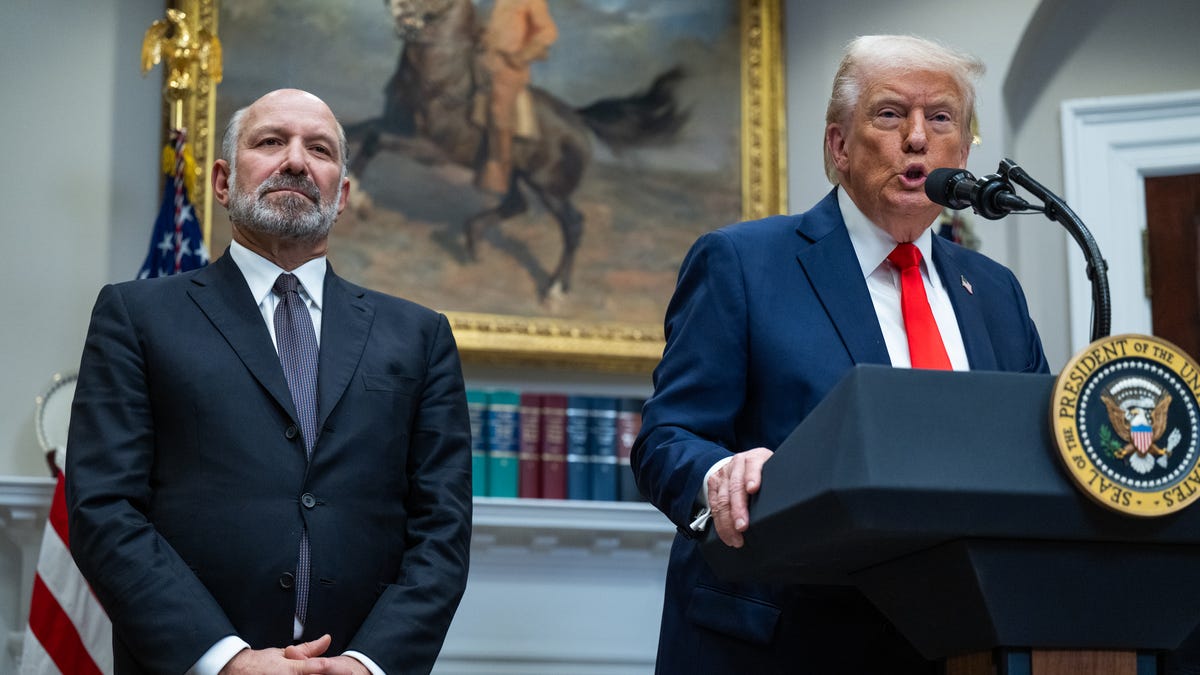Lawmakers are taking their first step toward putting up guardrails for cryptocurrencies. But as legislation goes, it’s a relatively modest step – and some former regulators warn that the guardrails have big gaps.
The framework, which a House committee will take up on Wednesday, would only apply to stablecoins, a type of cryptocurrency designed to hold a steady value, usually of $1.
And the bulk of the legislation would not apply to Tether, the issuer of the world’s largest stablecoin, which has ties to Commerce Secretary Howard Lutnick.
Lawmakers have been talking about imposing guardrails on stablecoins for the past several years and see this as the easiest issue to tackle when it comes to imposing restrictions on the crypto industry. But former regulators say the plans have loopholes that could confuse consumers and place U.S.-based stablecoin issuers at a big disadvantage to their less-regulated foreign counterparts, such as Tether.
“They’re basically driving a truck through the regulatory framework before it’s even passed,” said Tim Massad, who served as a top financial regulator during the Obama administration and is now the director of the Digital Assets Policy Project at Harvard University’s Kennedy School.
For years, regulators and consumer advocates have been rallying for stronger guardrails for cryptocurrencies, while crypto firms themselves have also sought to refashion federal laws in an industry-friendly way. In 2022, the failure of the FTX crypto trading platform as well as the failure of the TerraUSD stablecoin, added momentum to the call, in part to help protect investors from fraud and abuse.
One key concern: As stablecoins gain in popularity and potentially become used for everyday payments, they could be vulnerable to mass withdrawals if doubts emerge about consumers’ ability to continue redeeming tokens at a one-to-one ratio. That could force a scramble by stablecoin issuers to liquidate their reserves, putting downward pressure on the prices of their assets and potentially damaging broader financial markets.
The House Financial Services Committee on Wednesday is expected to vote on its version of the legislation. If signed into law, it would effectively exempt Tether and other stablecoins issued overseas from U.S. oversight for at least two years. A related Senate bill, which passed the Senate Banking Committee last month, would permanently carve out Tether and other foreign-based stablecoins from U.S. regulation.
Tether’s escape from the restrictions has fueled speculation on Capitol Hill about whether the carve-outs are related to the firm’s ties to Lutnick. His former Wall Street brokerage took a stake in Tether of an undisclosed size, while also managing a significant portion of Tether’s reserves, primarily held in U.S. Treasury bills, the Financial Times reported last year.
Tether, which is based in El Salvador, represents about two-thirds of the more than $200 billion global stablecoin market. The firm’s chief executive, Paolo Ardoino, has stressed in recent media interviews that foreign-based issuers of dollar-pegged stablecoins like Tether will help ensure the supremacy of the U.S. dollar.
That image contrasts sharply with the way Tether was viewed during the Biden administration, when the Treasury Department spent months investigating it for allegedly facilitating illicit financial activities.
A spokesman for Tether had no immediate comment. A representative for Lutnick didn’t respond to requests for comment.
The crypto industry, which complained of unfair treatment during the Biden administration, is eager to cement its influence in politics and the mainstream financial system after spending more than $130 million to elect President Donald Trump and other pro-crypto candidates in last year’s election.
The effort appears to be yielding results: Trump, in contrast to his predecessor, has pledged to support the industry. He has tapped pro-crypto regulators as well as a prominent Silicon Valley investor to serve as his crypto czar. He launched plans to grow the government’s existing stockpile of bitcoin and other digital assets. Meanwhile, financial regulators are rescinding hurdles for banks to engage in crypto activities and dropping enforcement cases against crypto platforms.
The stablecoin legislation could hand the administration and the crypto industry another early victory. Specifically, it would create a federal framework for U.S. stablecoin issuers, requiring them to hold reserves in safe assets and subjecting them to oversight by federal banking regulators. They would also have to follow U.S. anti-money-laundering and sanctions rules.
“This is about keeping innovation and opportunity on American soil rather than driving it overseas,” said Sen Tim Scott (R-South Carolina), the chairman of the Senate Banking Committee, in a statement last month. His panel approved its version of the legislation in a bipartisan vote on March 13.
Critics say the bills are advancing through both chambers so quickly that lawmakers are overlooking legislative gaps.
By effectively exempting stablecoins if they are issued offshore, the bills could inadvertently discourage companies from setting up shop in the United States. They could also put U.S. issuers at a regulatory disadvantage, as they could be required to follow rules that won’t apply to foreign-issued stablecoins. Consumers may also face confusing choices, as the regulatory guardrails could apply to some stablecoins circulating in the U.S. but not to others.
“The foreign issuer loophole undermines the entire structure and purpose” of the bill, wrote Massad, the former regulator, along with two law professors, Dan Awrey and Howell Jackson, in a recent memo on the Senate bill.







